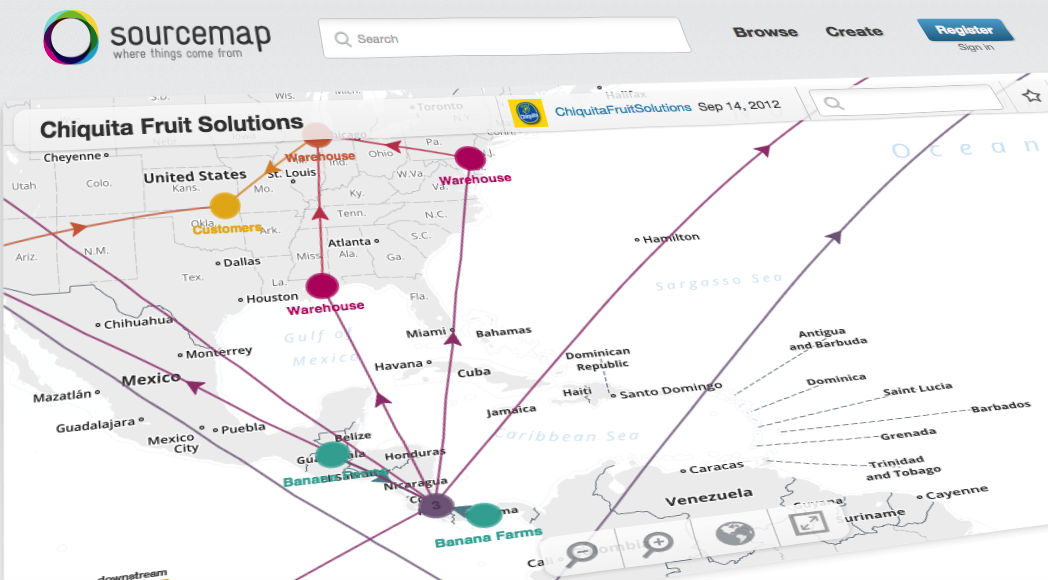Sourcemap Is Mapping The Supply Chains Of The World
Where does stuff really come from? Sourcemap has the answers...
Remember the first time someone tried to explain the supply chain to you? You were likely at university or perhaps it was in your first job. The whiteboard markers came out and a rudimentary picture that included farmers, factories, trucks and shops all joined up with lines and arrows were drawn.
Well, such supply chain drawings have come a long way. I was reminded of this yesterday when talking to a colleague about Sourcemap, a website I stumbled across years ago, but appears to have developed a great deal since I last checked in.
In short Sourcemap is a supply chain visualisation tool that, according to the company, allows you to map your end-to-end supply chain automatically from your purchasing data. Linking raw materials all the way through to end customers.
Not only does Sourcemap allow firms to produce a visualisation of their supply chain, it also enables supply chain analysis (such as the carbon foot print) at each supply chain node. Below is a video that summaries what Sourcemap aims to achieve.
Supply Chain Mapping for Everyone from Sourcemap on Vimeo.
In its free edition the company details the supply chain journey of some of our most frequently bought products like BIC pens, Starbucks coffee and Colgate toothpaste. It maps both the upstream and downstream activities in the supply chain as well as the complexities present along the way. The tool allows you to zoom in and out on a world map to either gain a broader or more granular perspective on a particular supply chain.
From a quick look at the site, Sourcemap appears to be a brilliant tool for summarising a supply chain while concurrently providing insights into risk profiles and supply chain performance. It would make a great icebreaker when trying to get buy-in with senior management around what exactly is happening within your supply chain.
Images are one of our most basic and effective communication methods. Children learn to draw before they write. As the saying goes, ‘a picture is worth a thousand words’ and I for one, would much rather use a fully automated, interactive picture than read a thousand words about the make up and intricacies of a supply chain, I’m sure your boss will feel the same way.
